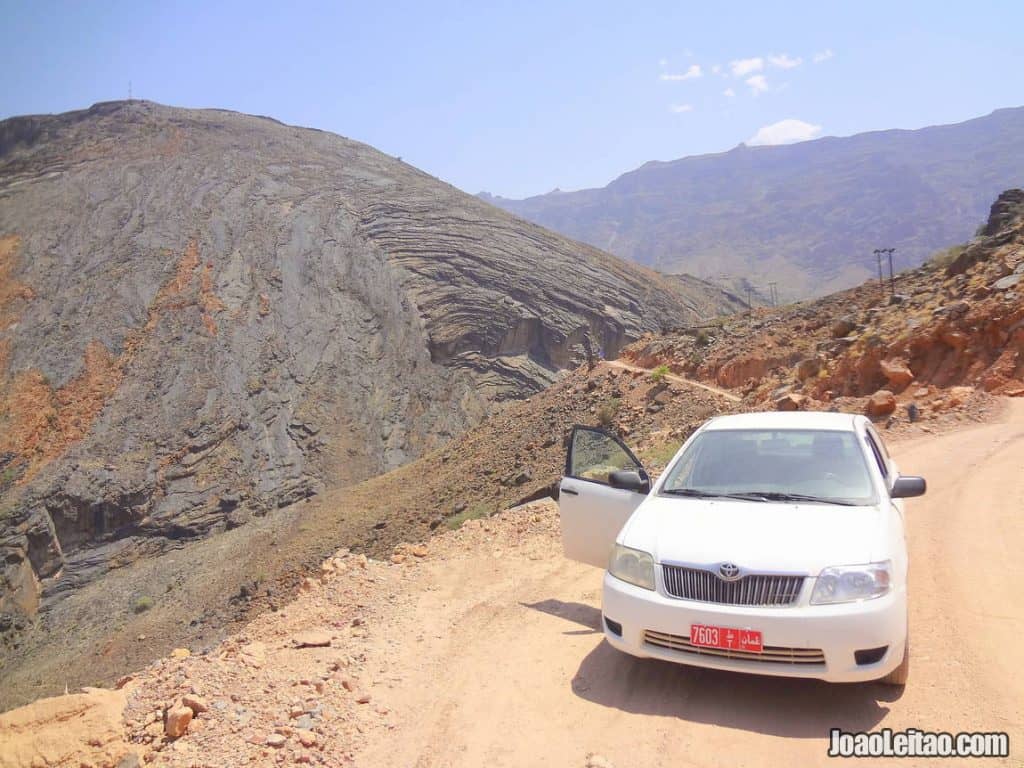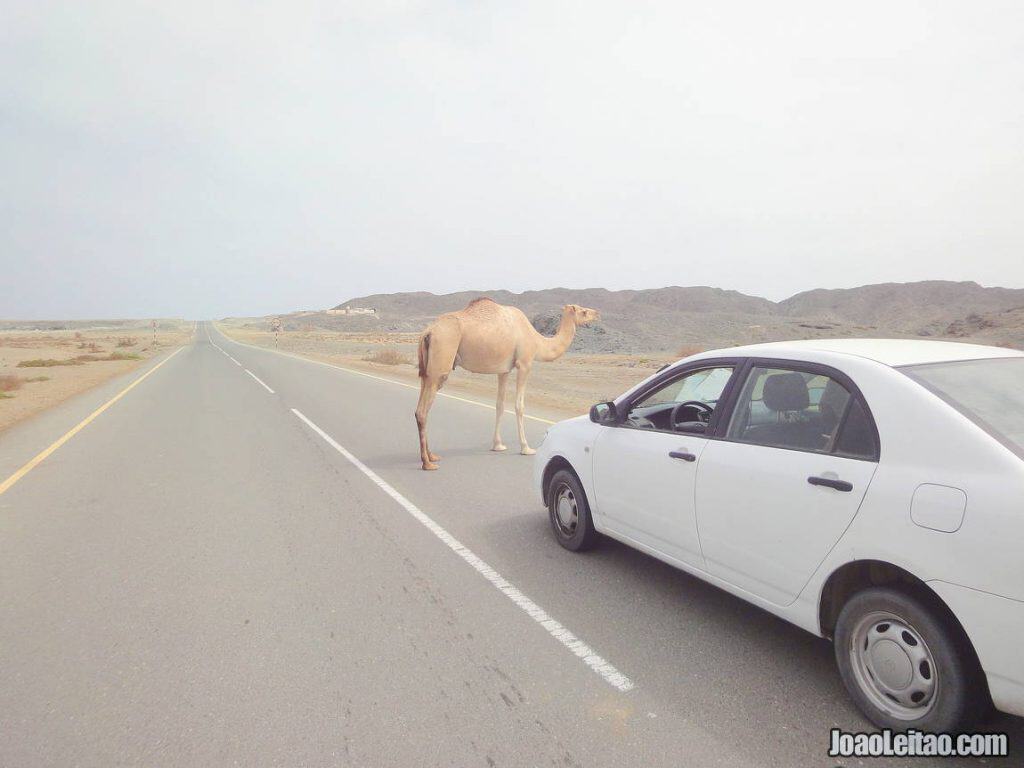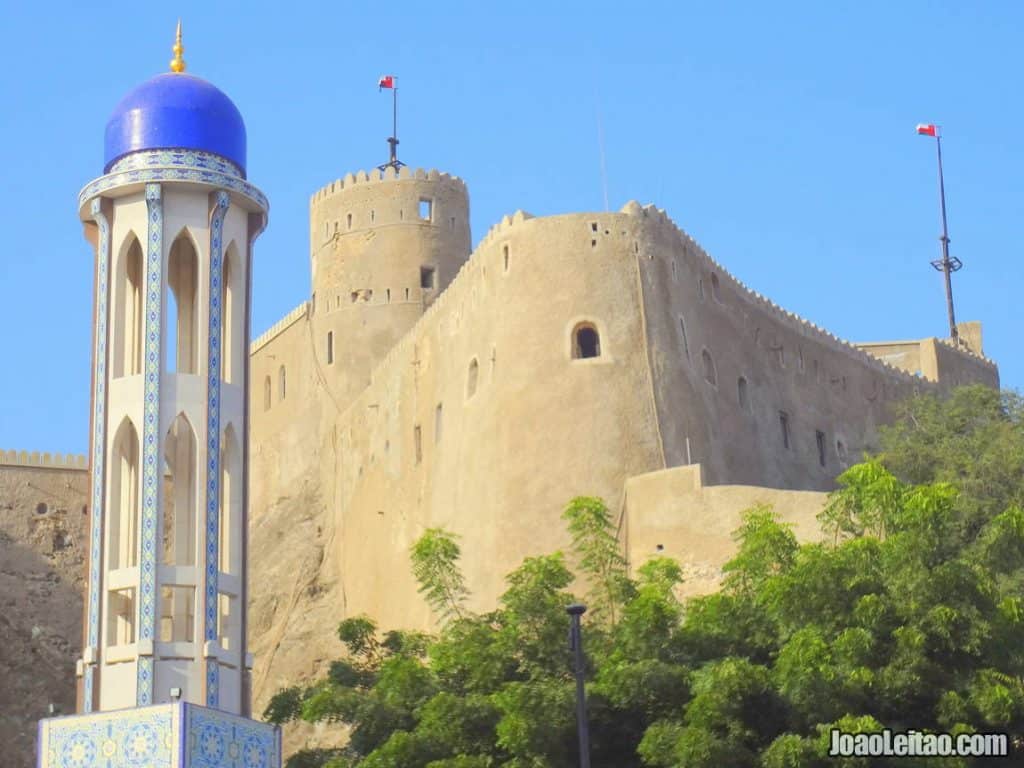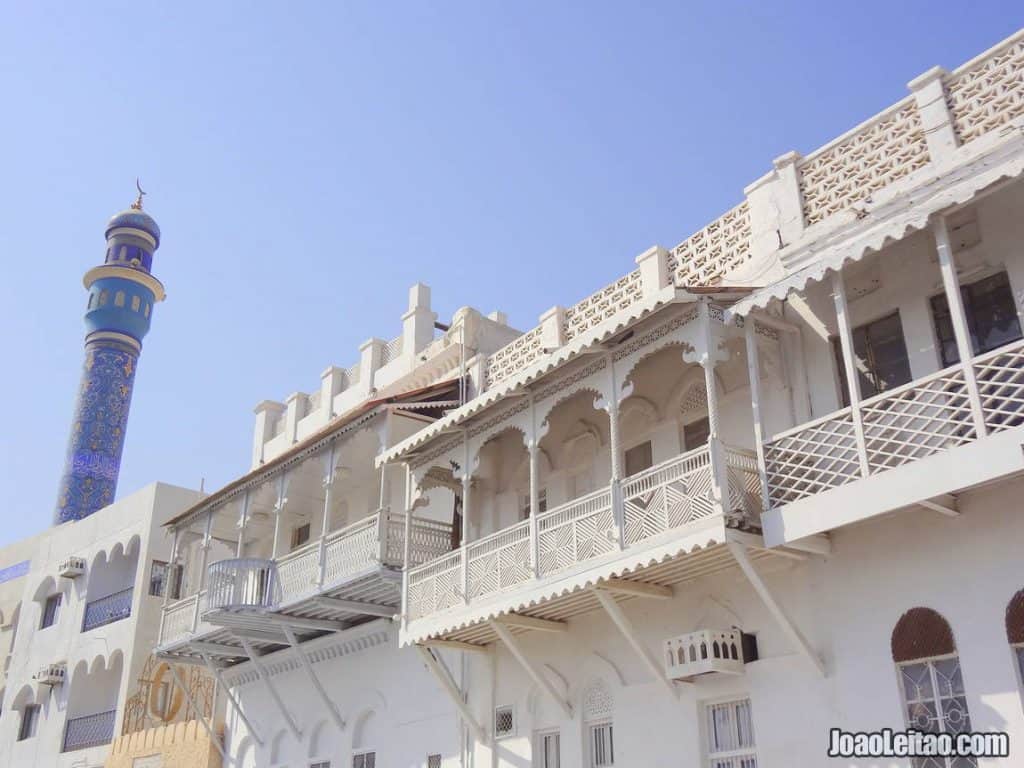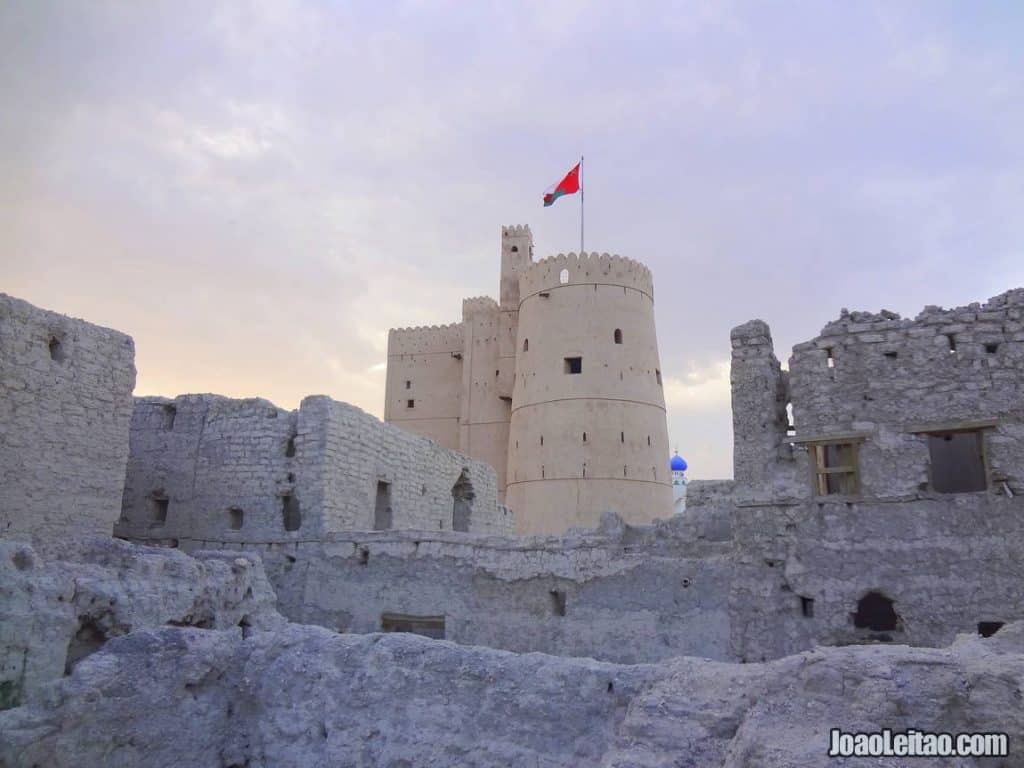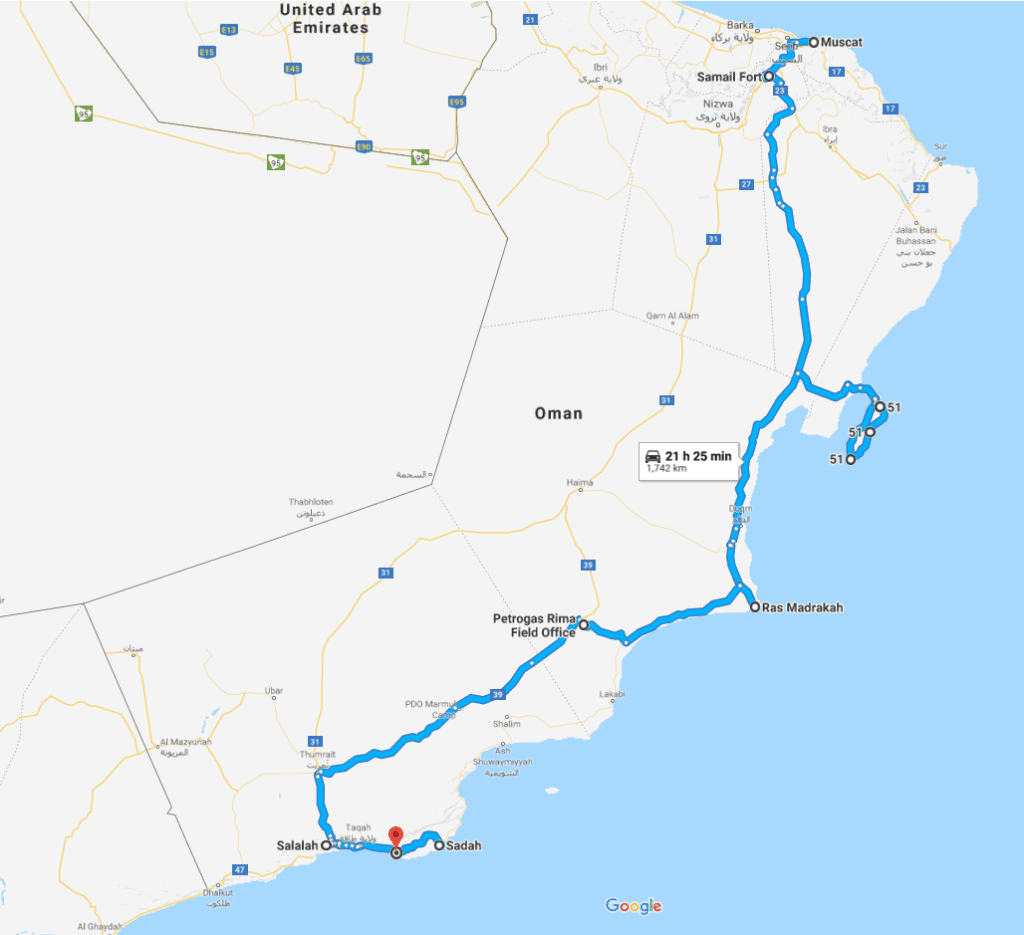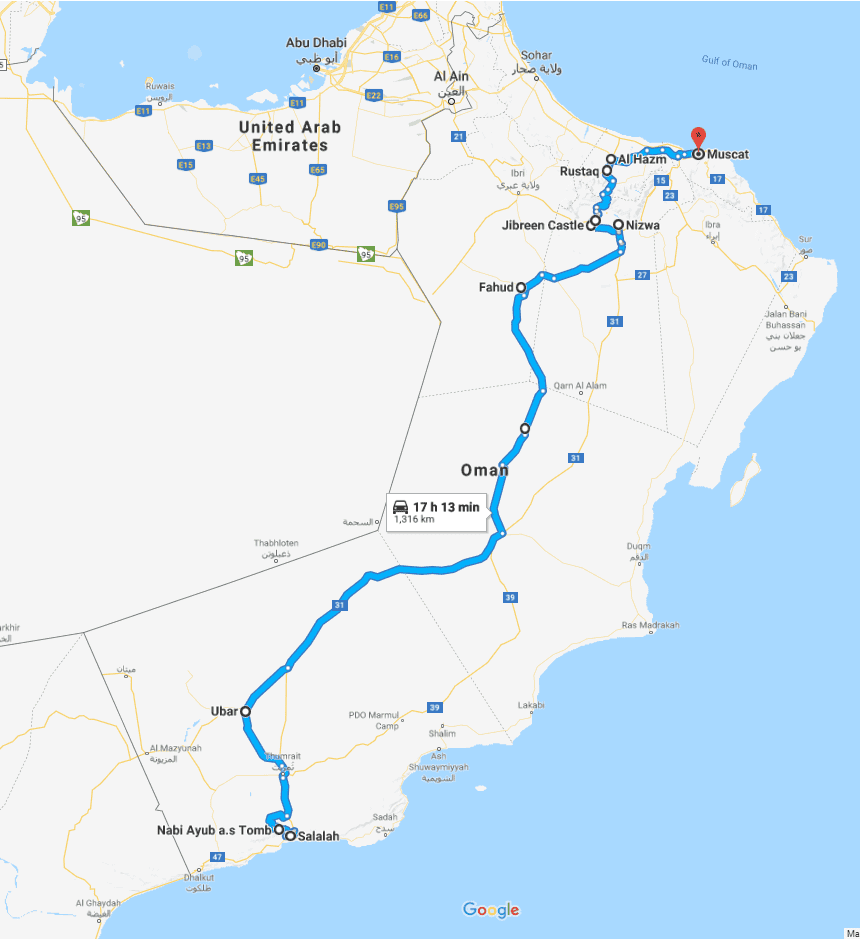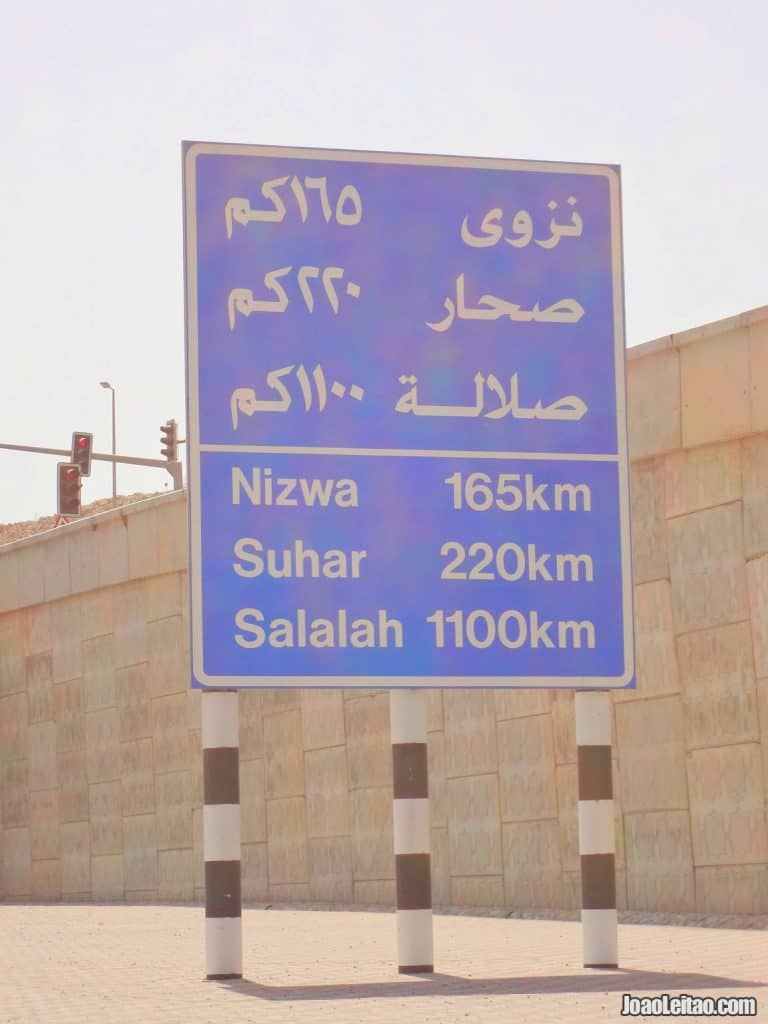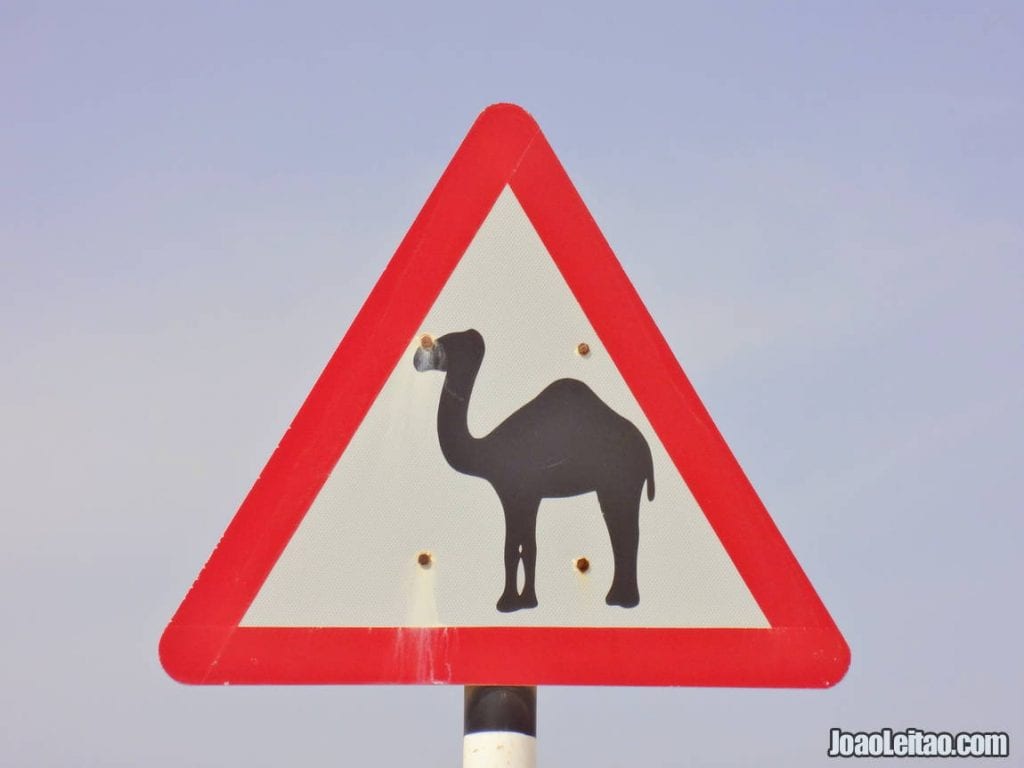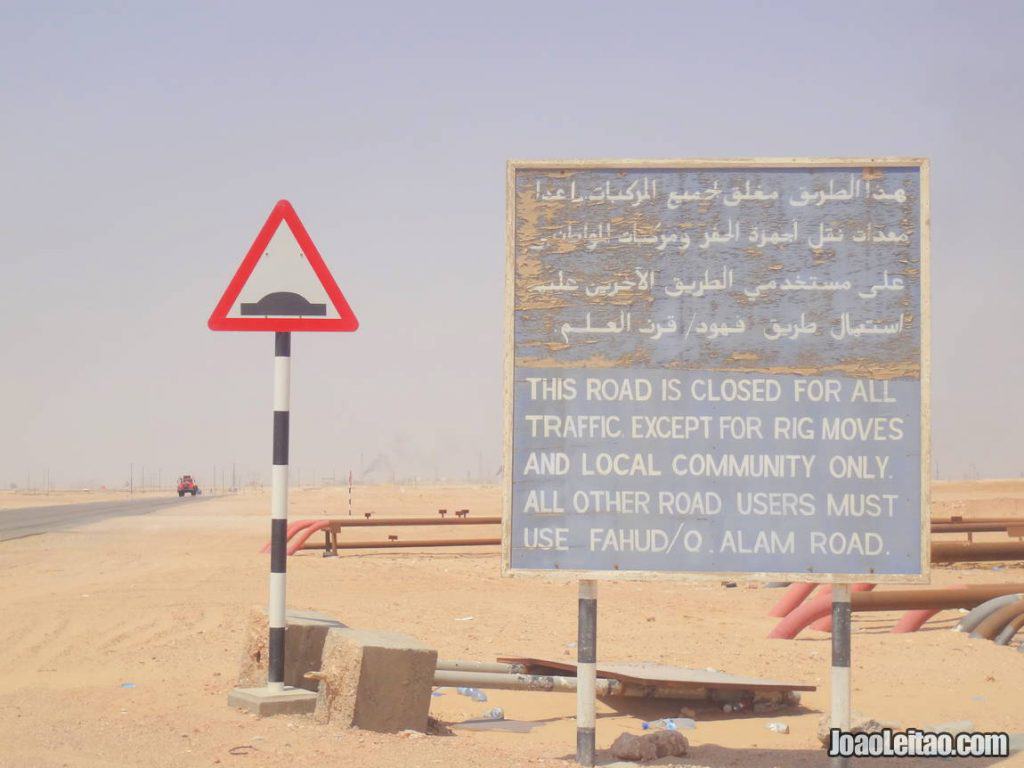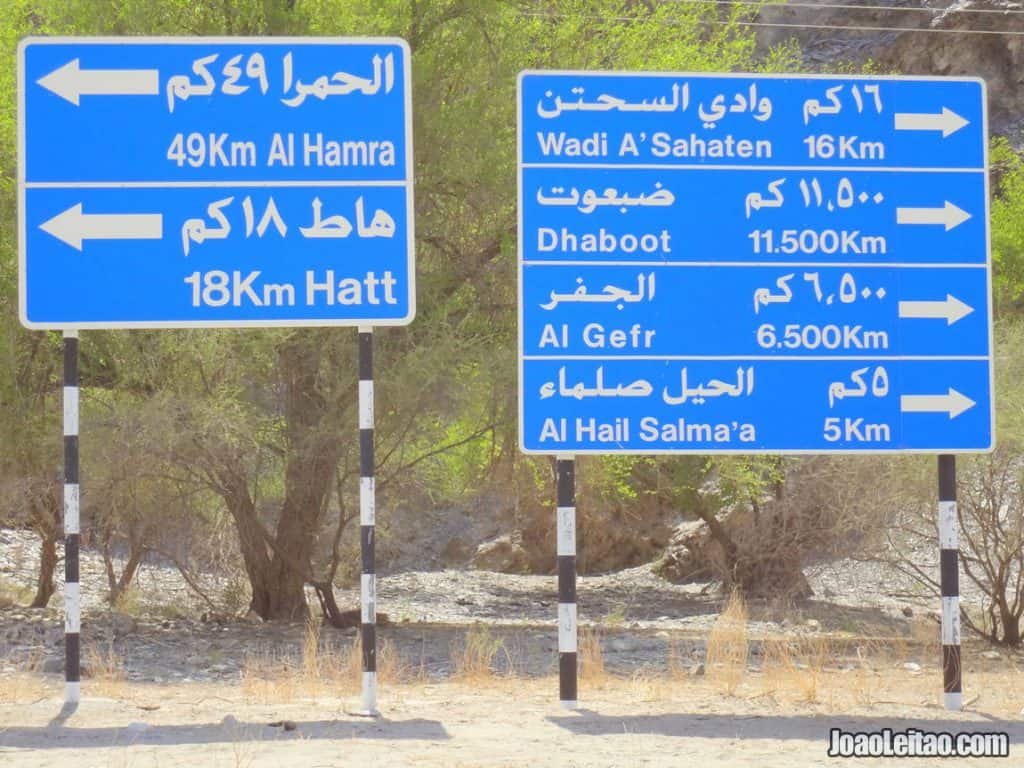Table of Contents
Driving in Oman
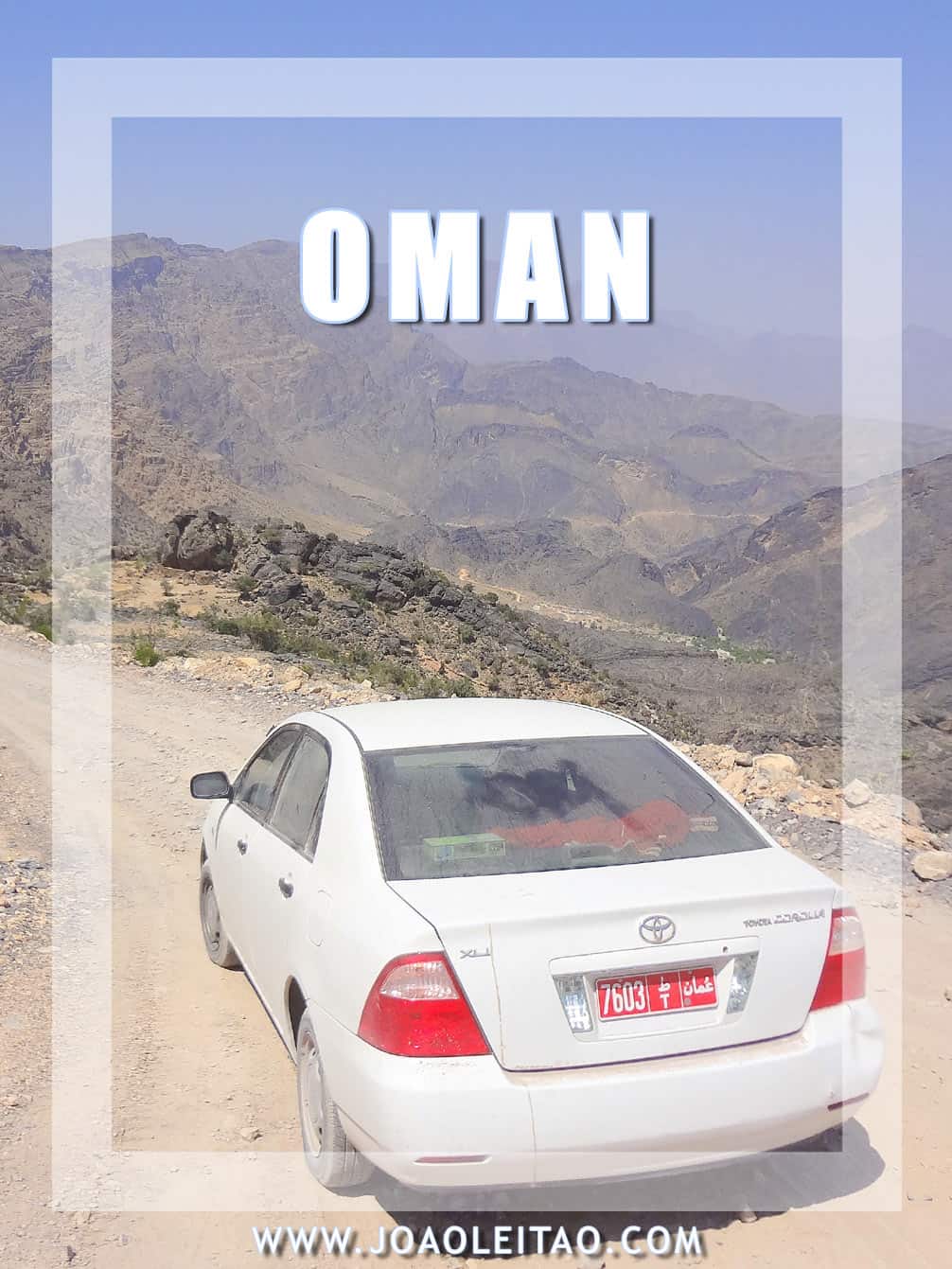
Oman is a fascinating country that has just been discovered by mainstream tourism in recent years. More than a decade ago, I had the chance of driving in Oman and visit some of the country’s best attractions and points of interest.
As most of you know, I love to travel and drive, so I didn’t waste time in getting myself a rental car in Muscat and drive around the country without any previously made itinerary or planning.
I entered Oman hitchhiking on a truck, coming from the United Arab Emirates all the way to Khasab, in the Ras Musandam Peninsula. After, I got a ferry-boat to Muscat from where I started my road trip in Oman.
During my two weeks Oman road trip I visited many castles, sand dunes, archaeological sites, markets, mountains and even a prophet’s tomb.
Read my article on the Oman Ministry of Tourism official website:
Oman’s best off-the-beaten-track adventures
Why to visit Oman?
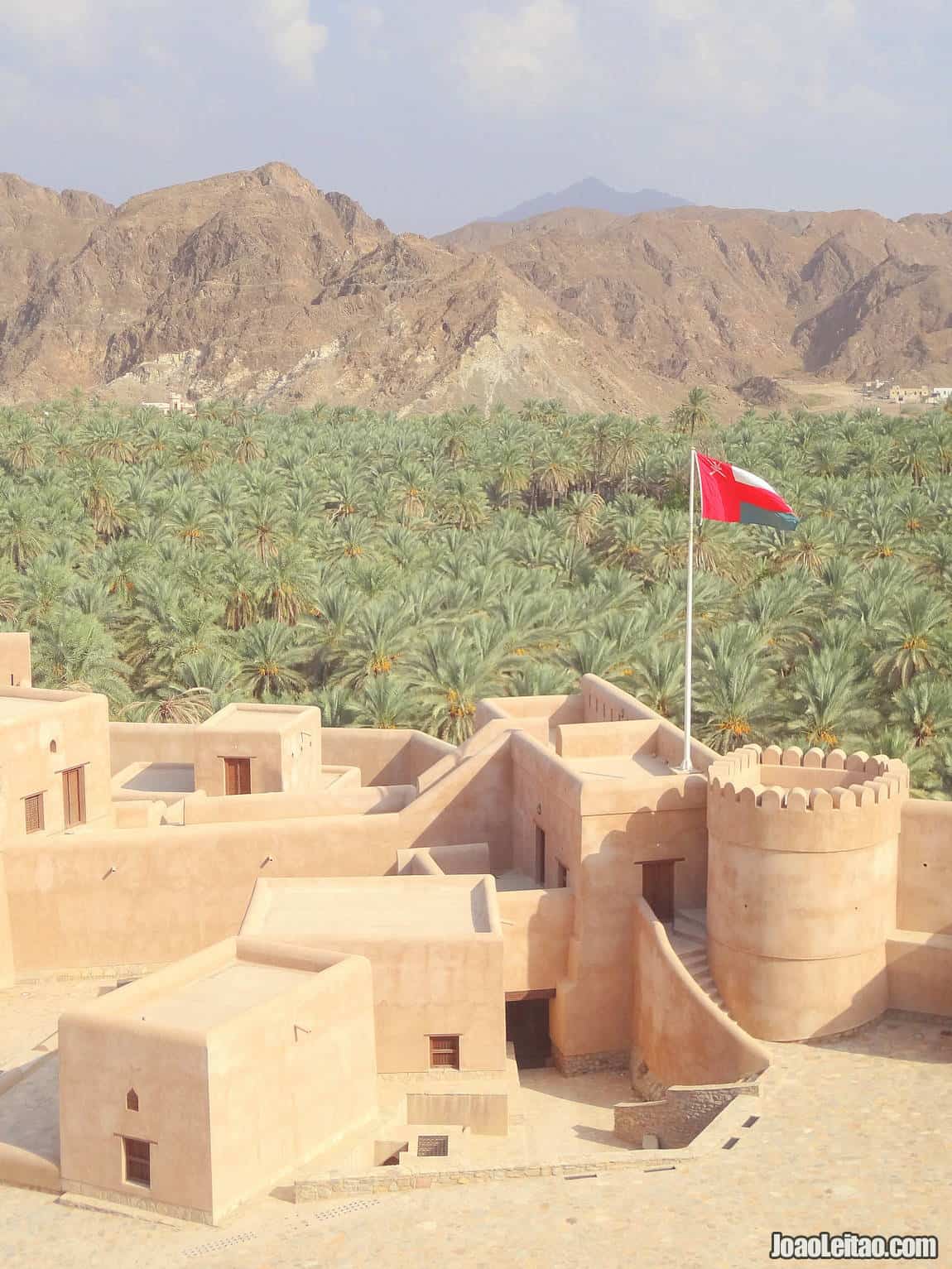
The history of Oman began in antiquity, when this region was already considered an indispensable place in commercial trade.
There are a few interesting historical facts about Oman, such as that in Sumerian language, the region was called “Magan.” Also curious to point is that the country was once ruled by the Achaemenid Empire, also called the First Persian Empire, founded 2500 years ago by Cyrus the Great.
The Arabic tribes reached the region during the 1st century, overpowering the Persians who lost all their influence in the area. The Ibadi Muslims managed to establish in Oman, creating an imamate that lasted until the 20th century.
The Portuguese visited and conquered Muscat in the 16th century, where they stayed until the successful military attack by the Ottomans at the end of the 17th century.
Led by Ahmed Ibn Said, a group of organized Sultans fought out the Ottomans in the next century. In the 19th century, Oman became a world power, protected by Great Britain. By indications of Sultan Qaboos bin Said Al Said, Oman and Muscat would become only known as Oman.
Traditionally, men wear the dishdashi, an ankle-length collarless robe, with long sleeves, usually white. The muzzar turban is also a necessary accessory. Women wear sirwal (pants) and a lihaf (head scarf). The most important event is, of course, Ramadan, the month dedicated to fasting.
It’s always kind of hard how to explain when you like a certain destination and why one should visit.
Oman is not one of those countries because the reasons why to visit are too obvious:
- Welcoming people,
- Safe environment for travelers,
- Amazing landscapes,
- Great beaches,
- Breathtaking mountains,
- Lively markets,
- More than 500 of historical castles and forts,
- Interesting archaeological sites.
The climate of Oman is scorching and also quite humid in the summer months. The best time to visit Oman is during the winter months (between November and March), as temperatures are much more pleasant. Temperatures are contrasting between day and night, as during the day they reach 50º C. The rainy region is in the south of the Dhofar, although along the coast the climate is milder.
My itinerary in Oman
Oman Road Trip
- Start: Muscat
- Samail Fort
- Masirah Island
- Ras Madrakah
- Rima Petrostation
- Salalah
- Sadah Coast
- Mirbat
- Taqah
- Sumhuram ruins
- Al-Baleed ruins
- Salalah
- Tomb of Prophet Job (Ayub)
- Ubar
- Ramlat as Sahmah (dunes)
- Fahud
- Nizwa
- Jabreen Castle
- Bahla Fort
- Jebel Akhdar
- Haat village
- Rustaq
- Al Hazm
- End: Muscat
Map of rental car trip in Oman
Total KM: 3071 km (1908 mi)
Oman Geography
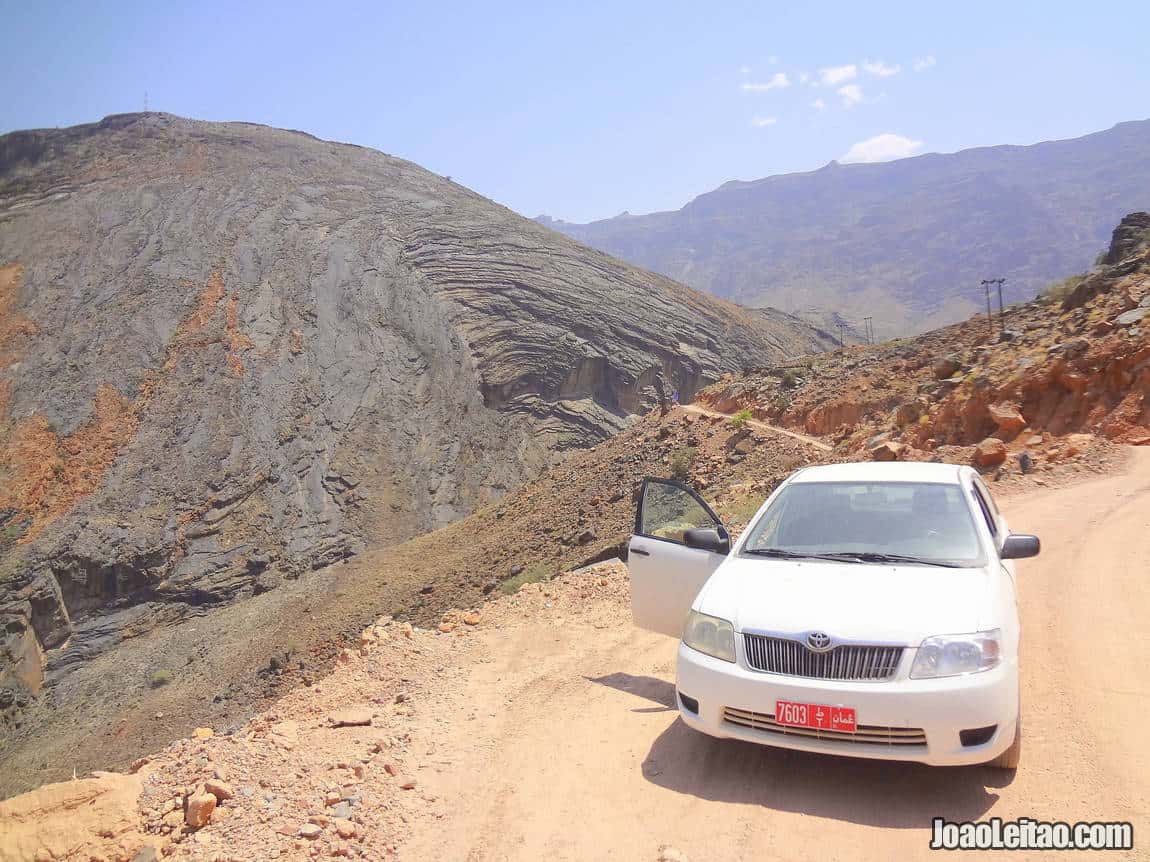
Oman has a land area of 212,460 km2, and is located in Southwest Asia, more precisely in the Southeast of the Arabian Peninsula. Oman territory also includes the small enclave of the Musandam Peninsula in the Strait of Hormuz, and the Masirah and al-Hallaniyah islands.
Driving in Oman is an incredible experience because we can cross rocky mountains, sand deserts and coastal regions in just one single trip.

Oman borders Yemen to the Southwest, Saudi Arabia to the West and the United Arab Emirates to the Northwest. The landscapes in the north are mainly composed by desert and sand, better known as Batinah, while in the south the Hagar Mountains are the most prominent natural feature of the region. The highest point of the Hajar Mountain Range, which runs parallel to the Gulf of Oman, is Mount Djebel Al-Akhdar, with 3107 meters.
My Top 9 Favorite places in Oman
1. Samail Fort
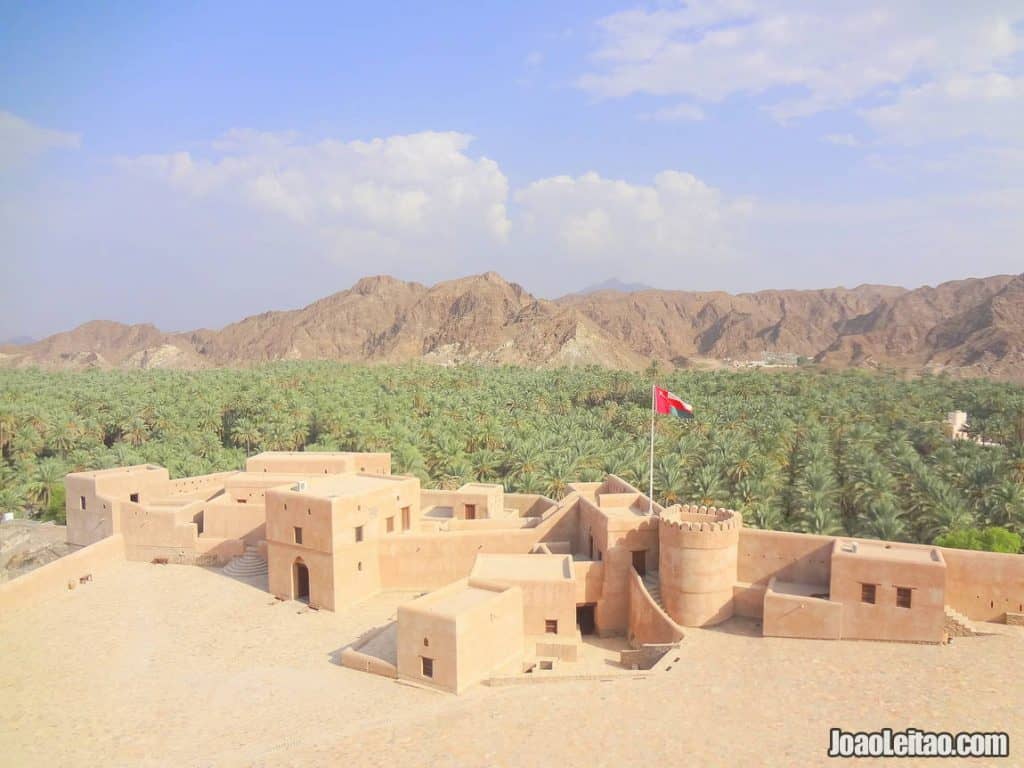
Samail Castle was undoubtedly the most beautiful castle I visited in Oman. The Samail Hosn, or Samail Castle, is surrounded by mountains and huge palm trees. A real oasis in the desert mountains. A few kilometers before Samail there is another small fort. This is known for its watchtowers which overlook the entire valley.
2. Jebel Akhdar
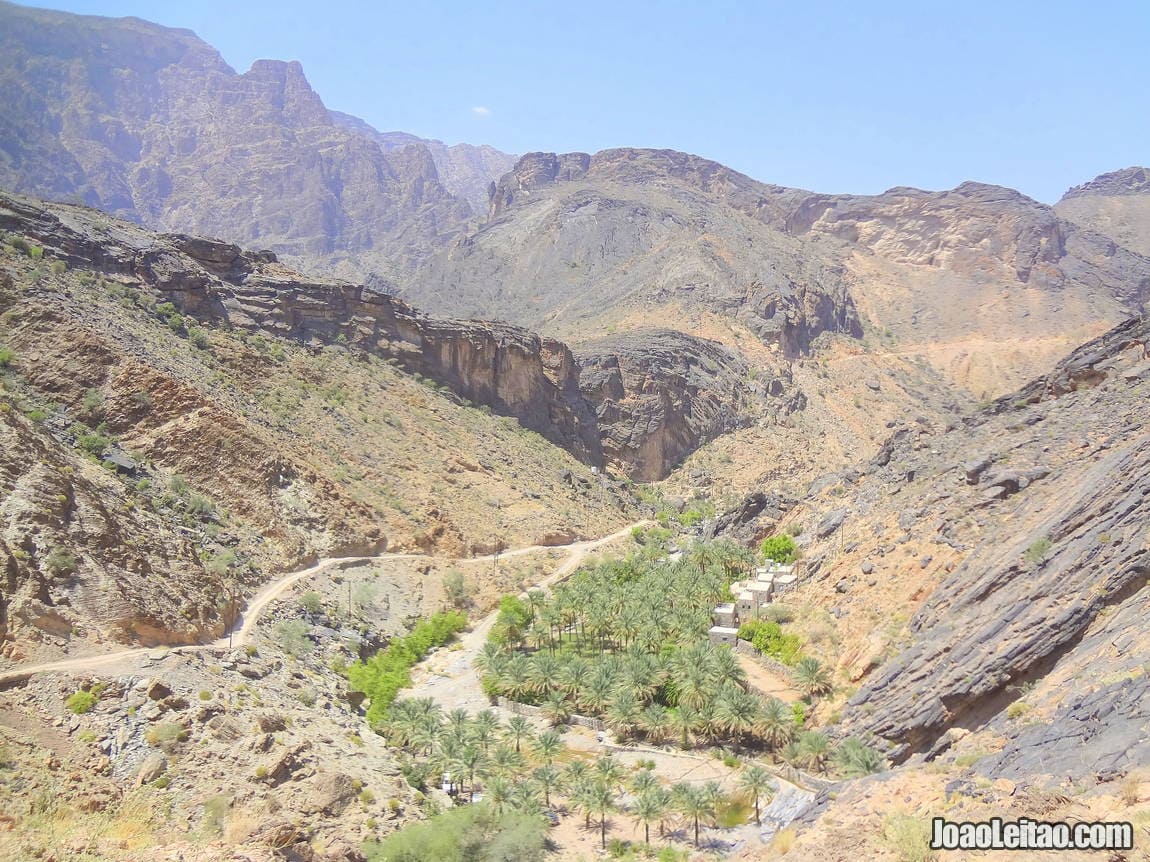
Crossing the Jebel Akhdar was one of the best moments of my Oman trip. I drove up departing from Al Hamra until Ar Rustaq, on the other side of the mountain. These tracks are to be made with a 4wd, but I drove a regular city car. If by chance you also do it (I mean, without a 4WD), I advise you to drive very carefully. Landscapes are amazing. Everything is breathtaking.
3. The Jabreen Fort
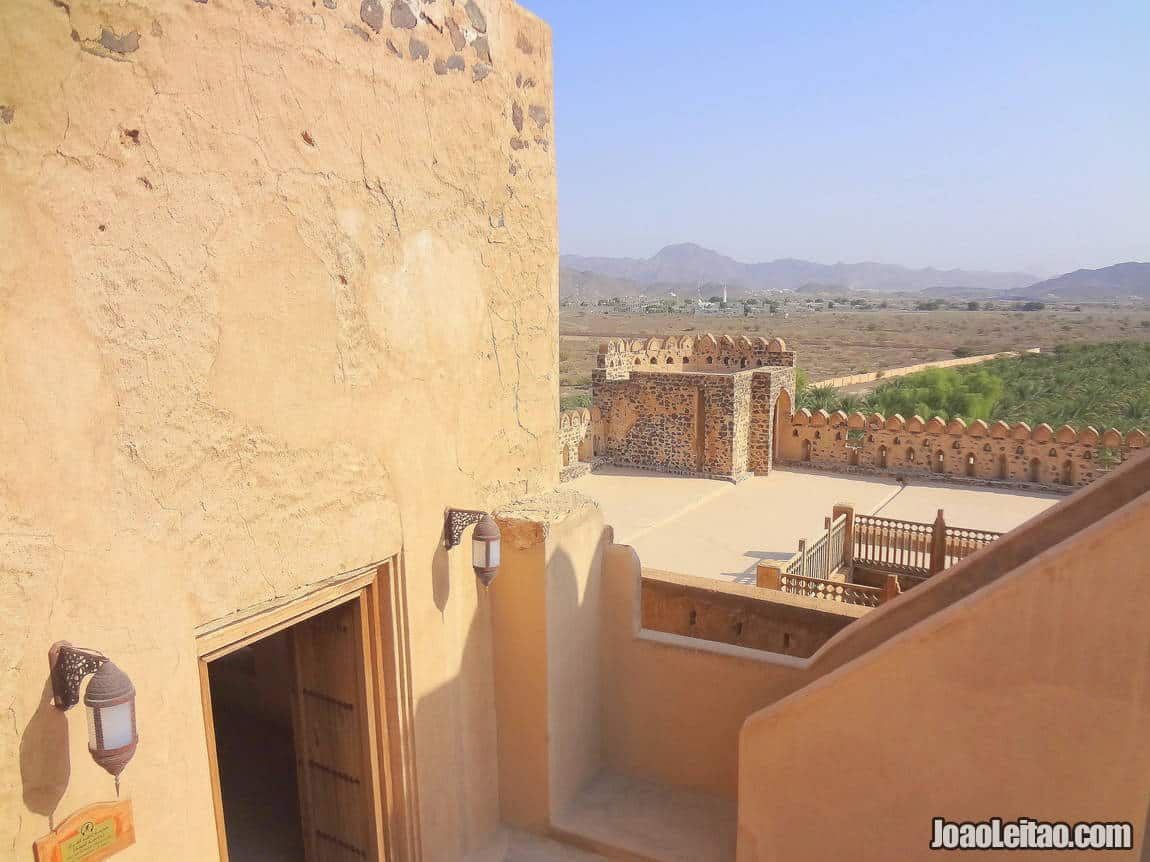
The Jabreen Fort, built in the 17th century in Bahla, Al Dakhiliyah region, is known as the most charming fortress in Oman. After his father cleared the Portuguese out of this territory, Imam Bel Arab bin Sultan Al Yarubi built this fortress. At the time, they were living in an unprecedented age of peace and prosperity. The fort was meant to showcase the wealth of those times without wars.
4. Nizwa
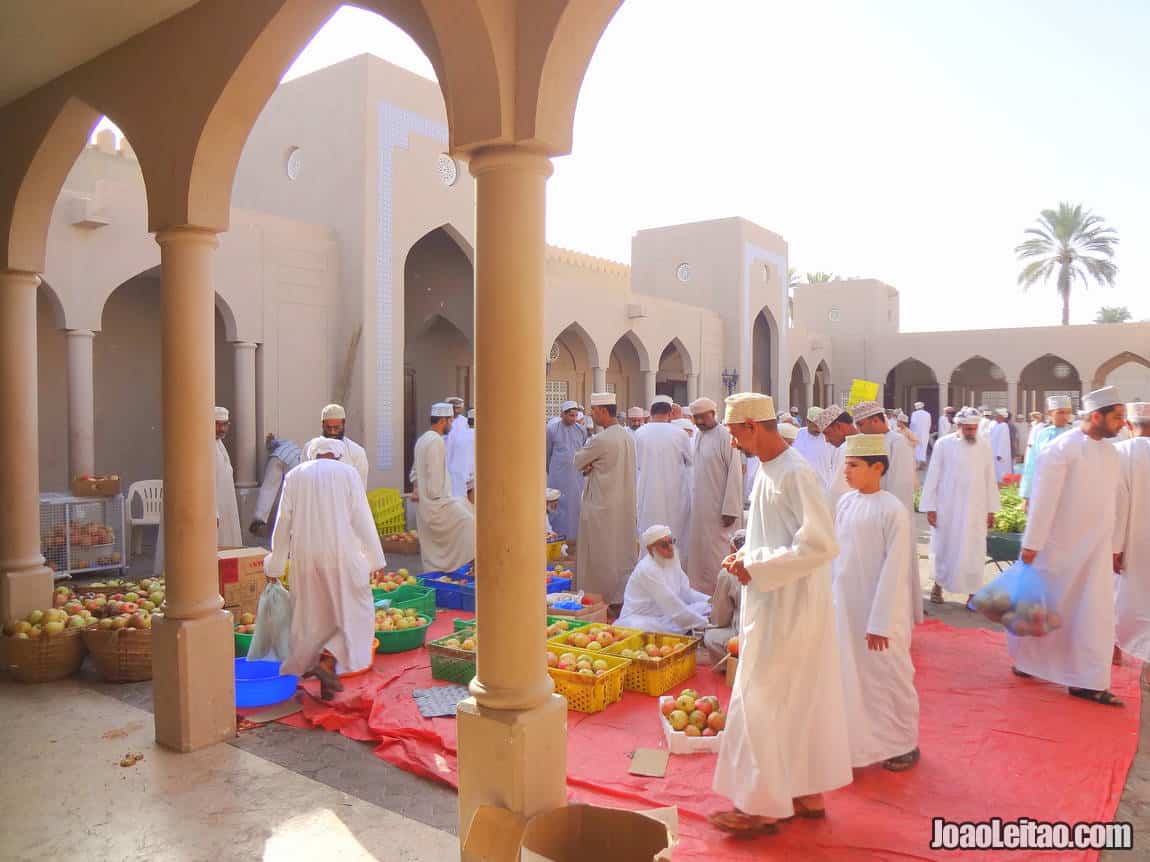
Nizwa is the most important city in the mountainous region in the center of Oman, an excellent base for the traveler who wants to explore some of the best attractions of that area: oasis, magnificent mountains, watering and water collection systems, abandoned villages, medieval forts, quaint markets.
5. The Tomb of Job
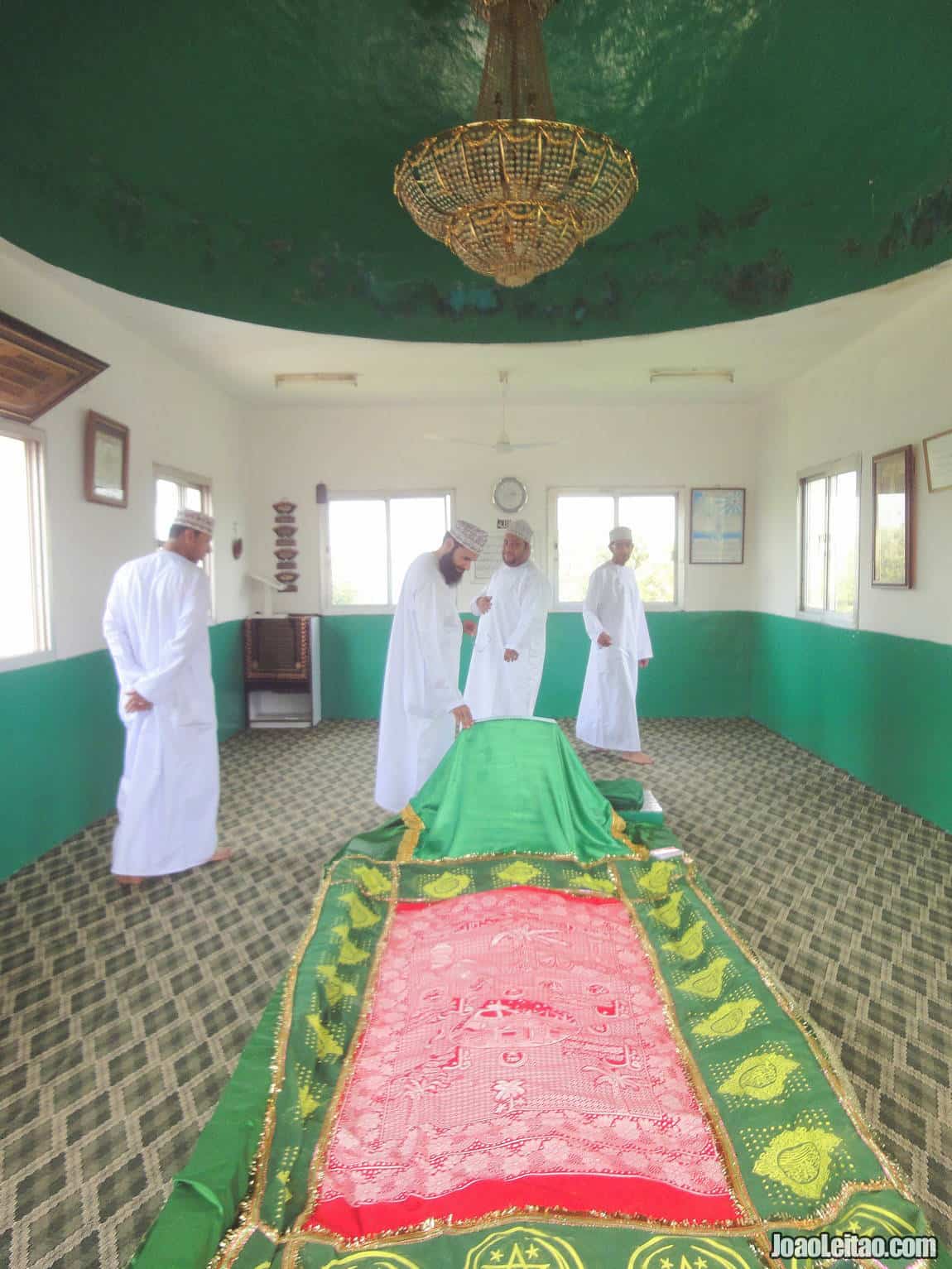
The Tomb of Job is located in the mountains, near Salalah, in southern Oman. Job (or Ayoub, in Arabic) is the main character of the Bible’s Old Testament book of Job. After struggling all his life and trying to understand the reasons for that struggle, Job’s devotion was rewarded by God. You’ll see Job’s footprint near the prophet’s tomb, one of the reasons why so many religious pilgrims visit this site.
6. Muscat
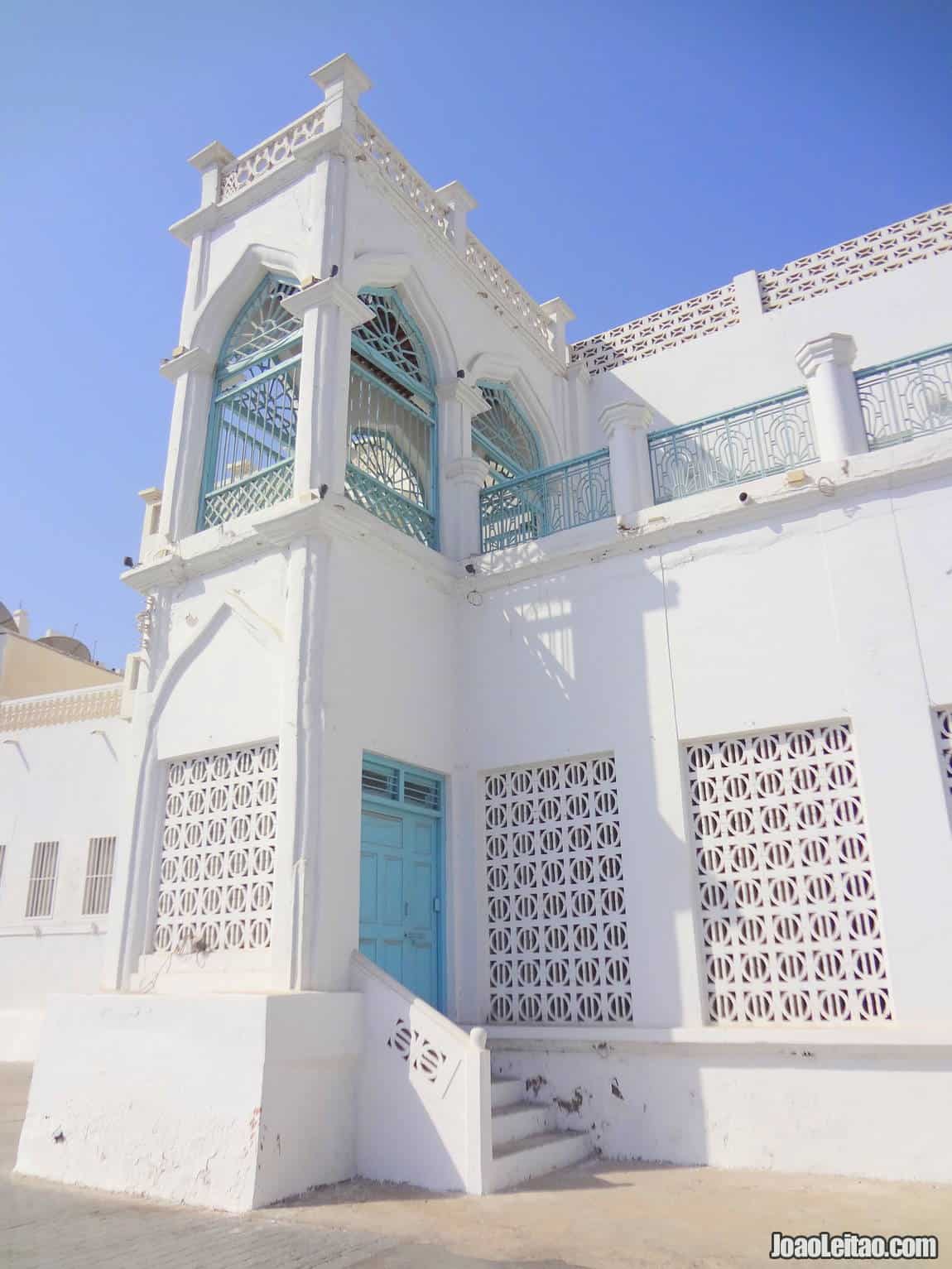
Muscat is the capital city of Oman and, to many visitors, the gateway into the country, the first pit stop before venturing out to discover the sultanate’s wonders. Thanks to its long History, Muscat has many points of interest that will keep you entertained, including the stately Sultan Qaboos Mosque and the Portuguese forts.
7. Masirah Island
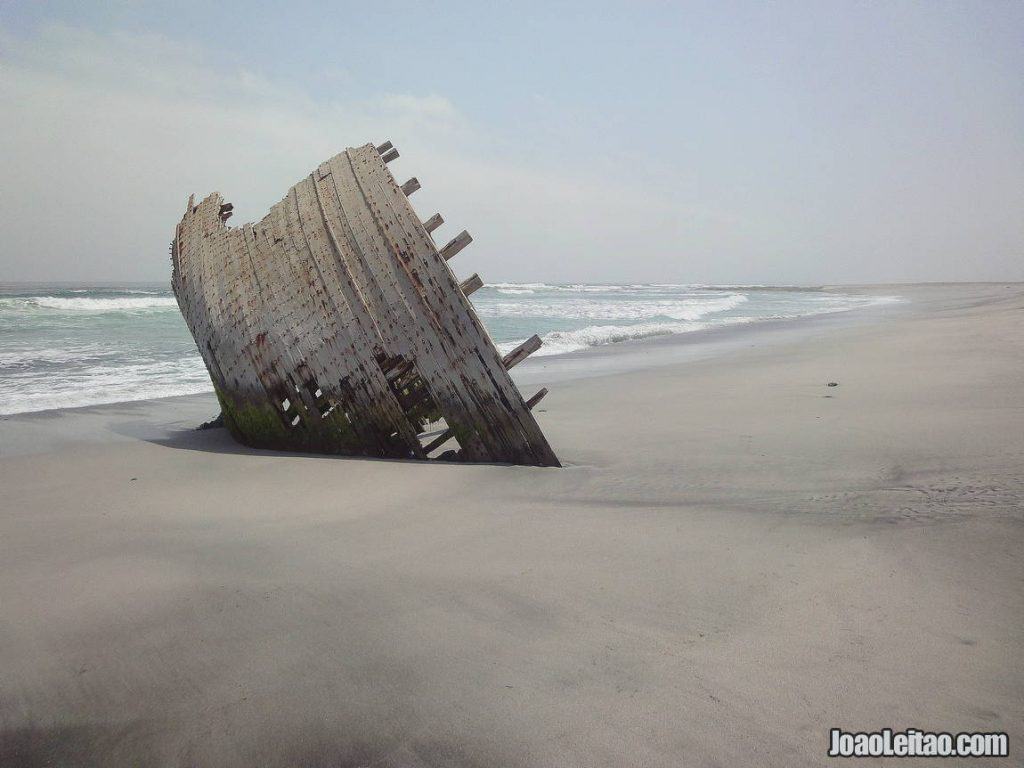
Masirah Island, one of the 11 provinces of Oman, is about 95 Km long and 14 Km wide. Fishing and the textile industry replaced shipbuilding, one of the former significant sources of revenue. The rugged terrain (the bottom of the sea is all hard rock) and the unstable currents make it impossible for boats to sail regularly, so one of the most exciting scenes you’ll see on this island is the number of shipwrecks. The strong winds make it an excellent place to Windsurf or Kitesurf, and the ocean’s perfect conditions also attract many surfers.
8. Taqah and Sumhuram Archaeological Park
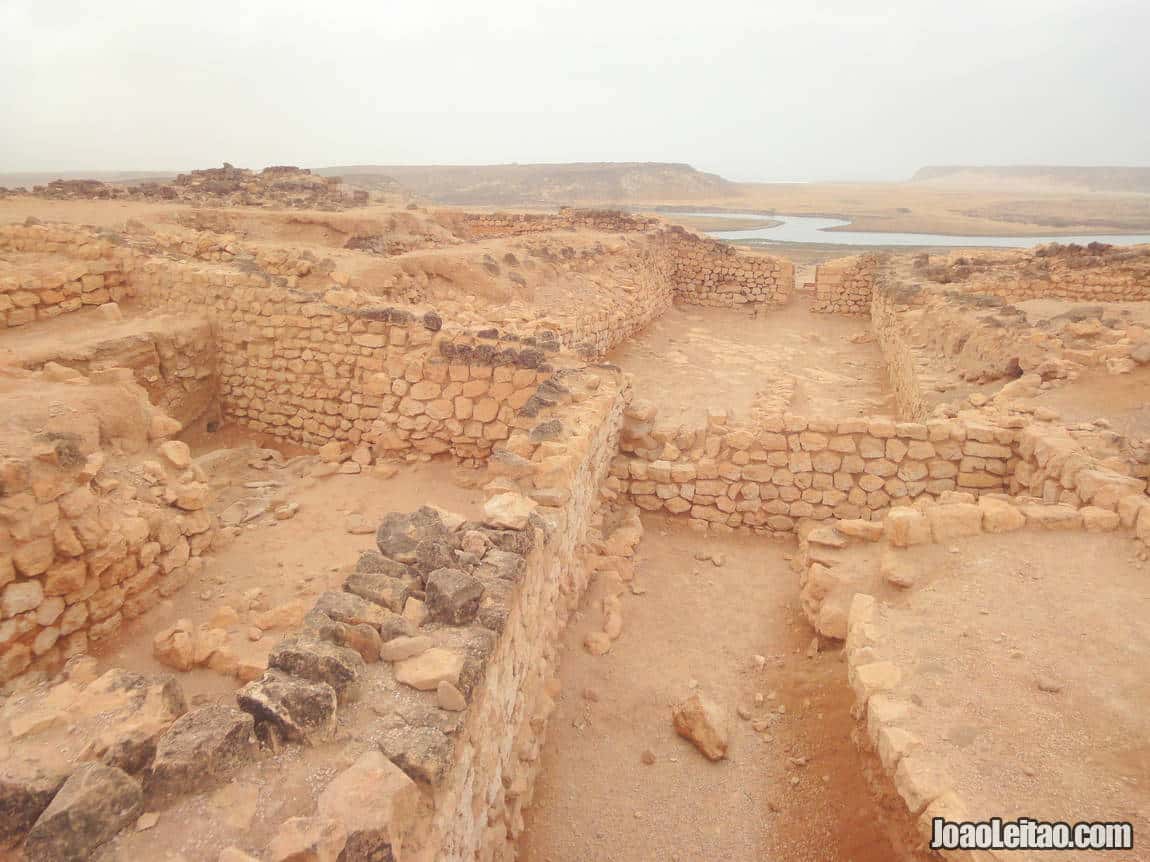
Taqah is a city on the coast, in Dhofar, Oman. It’s about 40 km from Salalah. The population’s primary sources of income are fishing and agriculture, which means you’ll eat well here. Here you’ll see the most famous castle south of Oman, the Taqah Castle. This beautiful building was built in the 19th century, quite recent when compared to the other castles in the North of Oman. It was the official residence of Sheik Ali bin Al Taman Ma’shani, Sultan Qaboos’ great-grandfather. Four towers were added to the original building in the 1960s, and it’s now a museum worth visiting for its grandeur. Next to the Taqah Castle is the cemetery where Sultan Qaboos’ mother was laid to rest. Don’t miss out on visiting the Sumhuram Archaeological Park (the oldest pre-Islamic settlement) with a view to the Khor Rori Natural reserve, a sanctuary for many birds including flamingos.
9. Al Hazm
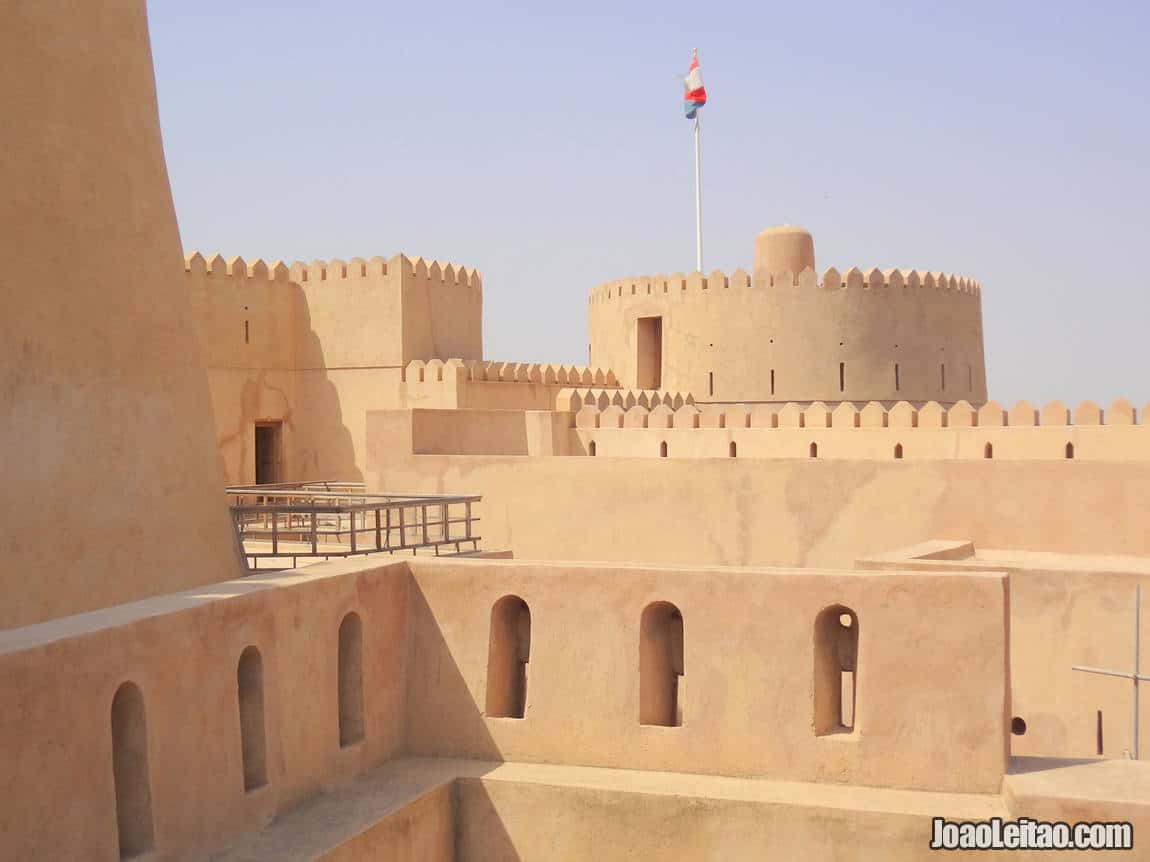
Al Hazm Castle is also an incredible sight. The green of the palm trees mixed with the desert landscape is as beautiful as it is hard to describe. Al Hazm Castle adds contrast to the view, against the backdrop of mountains when we see it from afar. It’s a two-floor building with an interior courtyard and two round towers on the South and the East ends. It houses some government offices, the Ministry of Culture and the Ministry of National Heritage specifically, but visits are allowed inside. A true symbol of local architecture, this massive monument was restored in 1996. You can feel the History of the place, intensely.
10. Bahla Fort
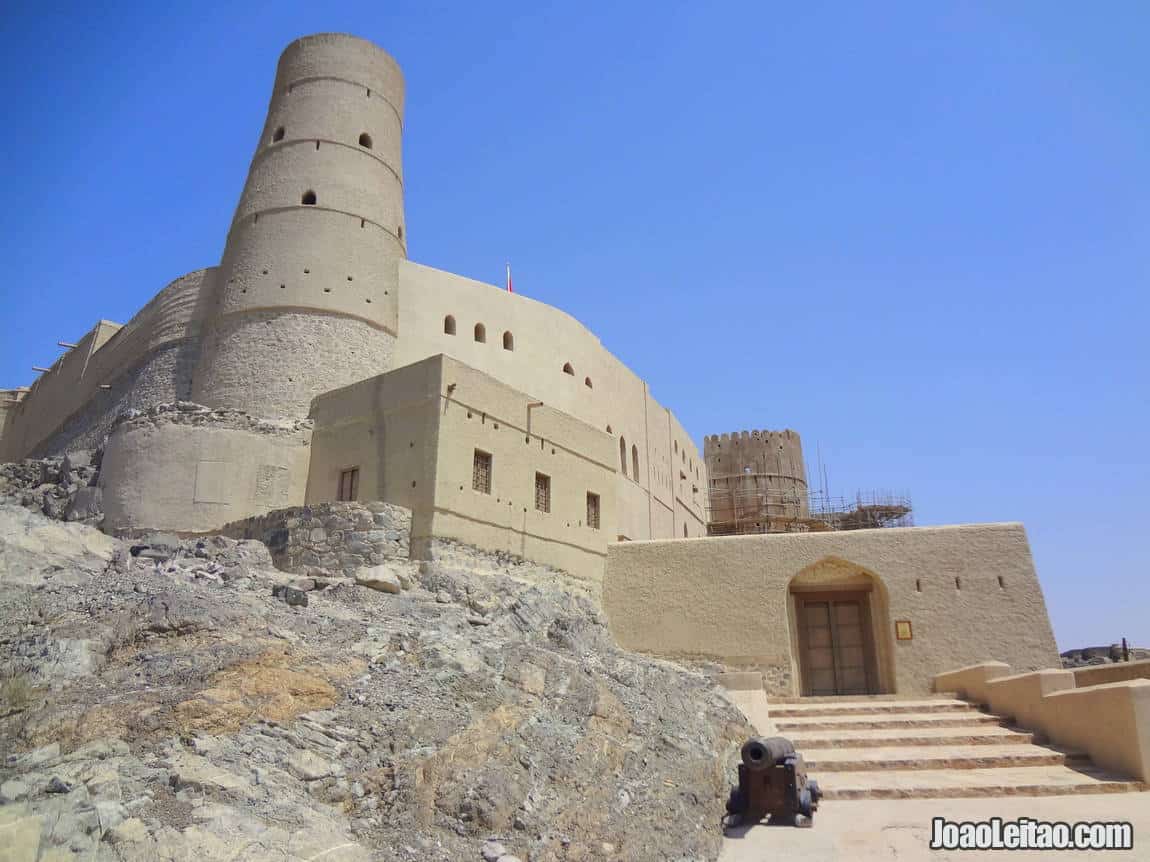
The Bahla Fort in Oman was built in the 13th and 14th centuries by orders of Banu Nebhan. Together with the Forts of Izki, Nizwa, and Rustaq, it served as a full-fledged defense mechanism from the constant attacks suffered here. It’s an impressive construction atop many plains, with 132 watching towers and 15 gates. It’s a UNESCO World Heritage Site, and it’s been frequently restored over time. The fort is worth the trip and if you’re unfortunate to find it closed, the outside alone is impressive enough. You’ll still have a monument full of History and charisma before you.
11. Salalah
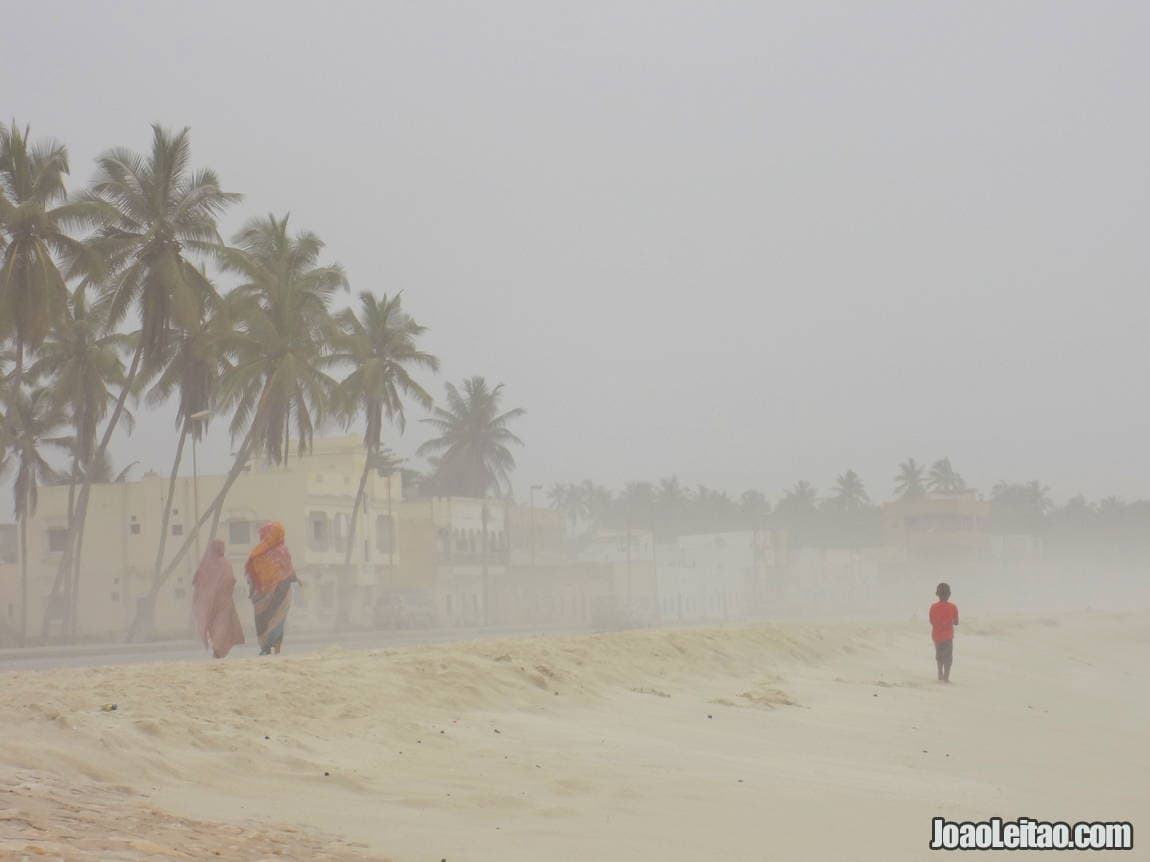
Salalah is the biggest city and the capital of the Dhofar province. It’s the birthplace of Sultan Qaboos bin Said. Commercially speaking, it was a highly successful city in the 13th century thanks to the incense trade and the fruit trade (mostly coconut). However, prosperity didn’t last forever, and the Muscat sultanate took its place in the 19th century becoming the capital city. Khareef attracts many tourists, between June and September. It’s a great way to freshen up from the intense desert heat, and it’s also how cities such as Salalah get their water supply. If you have the chance, travel during the Khareef season to visit the Al Marnif Cave and Mughsail beach in Shatti Al Mughsail (40 km from Salalah). It’s a genuinely magical scenery in the fog and drizzle: the beach, thick sand, and the rough seas, absolutely gorgeous.
12. The Lost City of Ubar
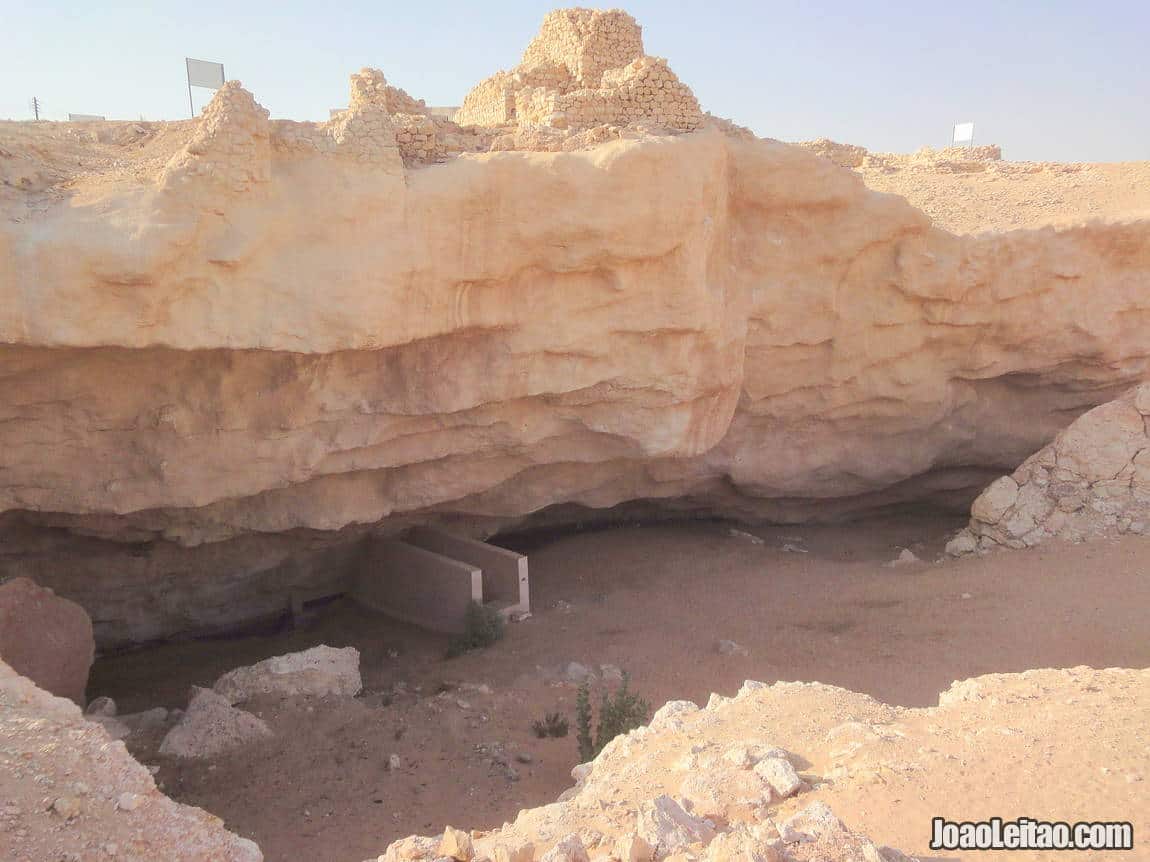
Frequently known as the Lost City of Ubar or Atlantis of the Sands. Destroyed by a natural catastrophe, the city has been the setting for many stories in literature (“Atlantis of the Sands,” by Ranulph Fiennes) and in movies (“Lawrence of Arabia,” by David Lean).
About 5,000 BC years ago, this legendary city was incredibly wealthy thanks to the commercial trade of incense from the Qara Mountains. Incense was as valuable as gold; both used as medicine and in religious ceremonies. With the help of satellite images, a group of archaeologists found Ubar, the fortress city buried in quicksand.
They discovered a limestone bunker built by King Shaddad ibn to use in case of a catastrophe, but they didn’t find any human remains inside. However, before this happened, Ubar was like a representation of paradise. People lived in tents, so there aren’t many traces of a settlement. There is, however, a vast fortress with several towers, which is why Ubar is mentioned in the Koran as the city of many towers.
Although Ubar sounds very exciting, don’t expect much from the site itself. If you’re a history freak like I am, you will find it interesting to visit.
Read my other pages about Oman:
25 Amazing places to visit in Oman

